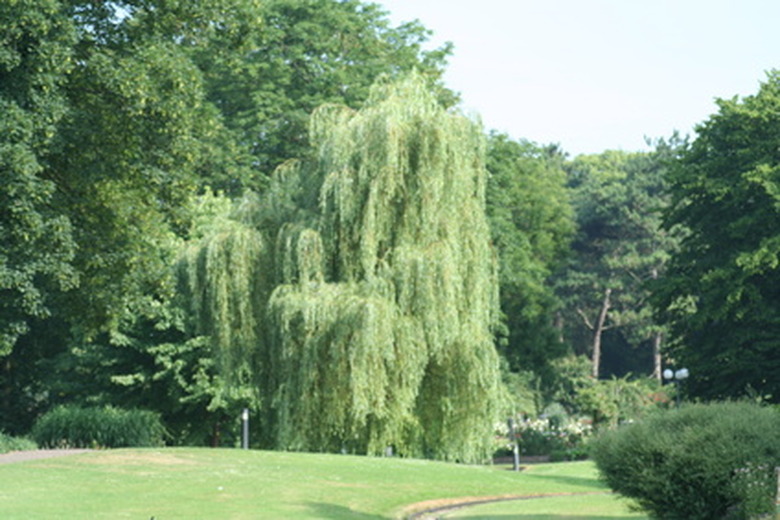How To Cut Down Weeping Willow Trees
Things Needed
- Pruning shears
- Branch loppers
- Plastic trash bags
- Chain saw
Weeping willows are among the most popular trees for home landscaping, according to the University of Minnesota Extension. The drooping, whip-like twigs that fall from the tree's limbs to the ground give the weeping willow its name. Though weeping willows are a popular tree, they are fraught with trouble. Weeping willows are softwood trees that break under stress from high winds. Additionally, the tree's roots will burrow into water and sewer lines and disrupt them. Care must be taken to remove a weeping willow. The tree's pendulous growth can get in the way as you work and create a dangerous distraction.
- Weeping willows are among the most popular trees for home landscaping, according to the University of Minnesota Extension.
- The tree's pendulous growth can get in the way as you work and create a dangerous distraction.
Step 1
Walk away from a weeping willow and look over the shape. A weeping willow will grow in an asymmetrical shape. The heaviest side of the tree is the side in which it usually falls. You must cut the tree down in this direction.
Step 2
Examine the base of the tree and the potential drop zone for obstacles that may be crushed in the fall, such as a car or children's toys. Remove any of these obstructions. Examine the area for power lines or structures as well. If you see these obstructions, have a professional arborist remove the tree.
- Walk away from a weeping willow and look over the shape.
Step 3
Clear any debris such as roots, sticks or rocks from beneath the tree. This will keep you from tripping as you work beneath a weeping willow. Clear an escape path leading away from the tree. Use this path to get out of the way of the falling tree or debris as the weeping willow begins to fall.
Step 4
Pull or cut down pendulous twigs from around the base of the tree using branch loppers or hedge shears so that they will not obstruct your vision or distract you by brushing against you. Bag up this growth for removal.
Step 5
Make a wedge-shaped cut in the base of the trunk on the side where you want your tree to fall. This opening should extend 1/3 of the way through the willow tree. Make a second cut, known as a back cut, on the other side of the trunk. This cut should extend 2/3 of the way through the tree, and should be located slightly higher on the trunk than the point of the wedge. The narrow strip of wood between the two cuts will act as a hinge along which the tree will fall.
- Clear any debris such as roots, sticks or rocks from beneath the tree.
- This cut should extend 2/3 of the way through the tree, and should be located slightly higher on the trunk than the point of the wedge.
Step 6
Move back away from the willow down your escape path as the tree falls. Do not return to the fallen tree immediately to avoid being struck by falling debris.
